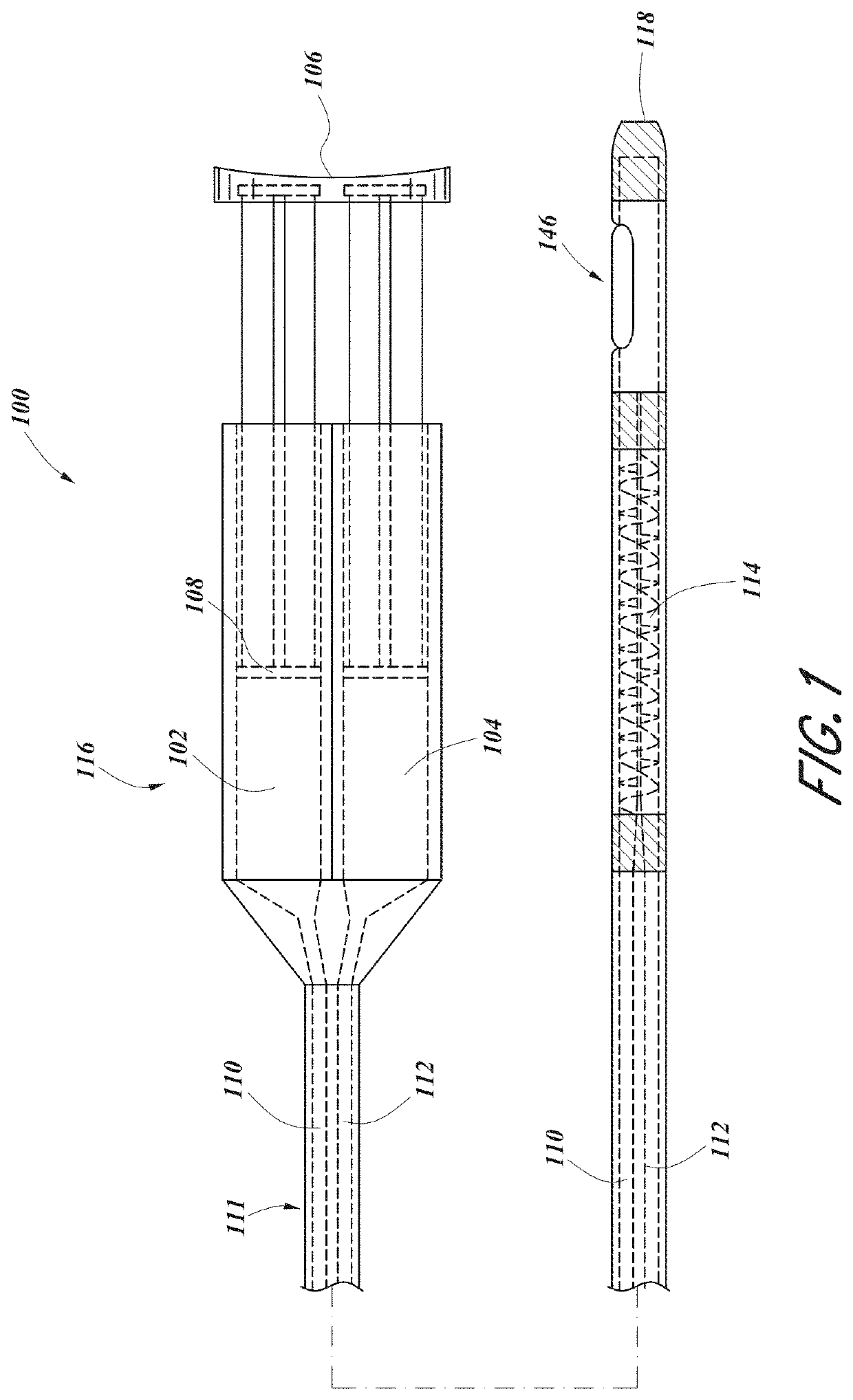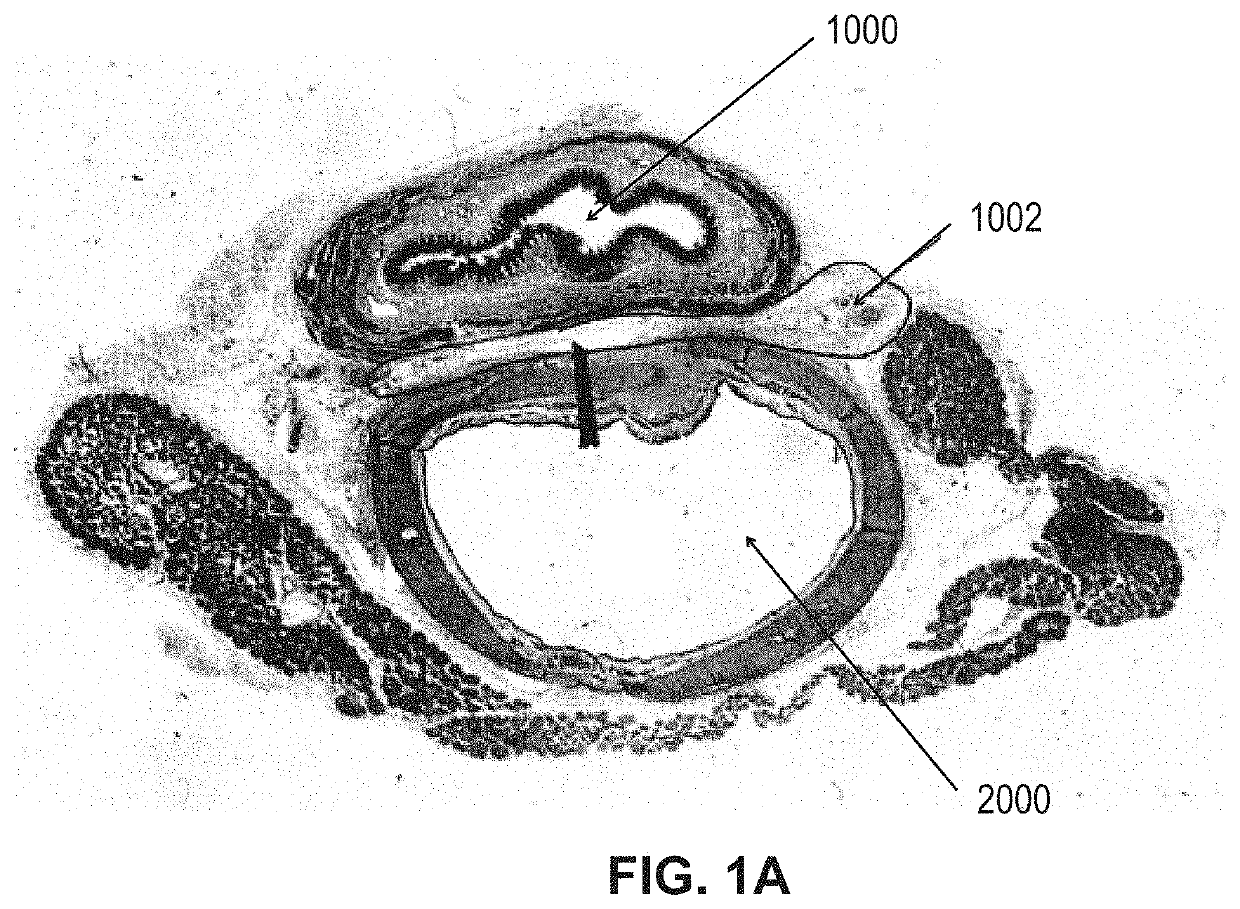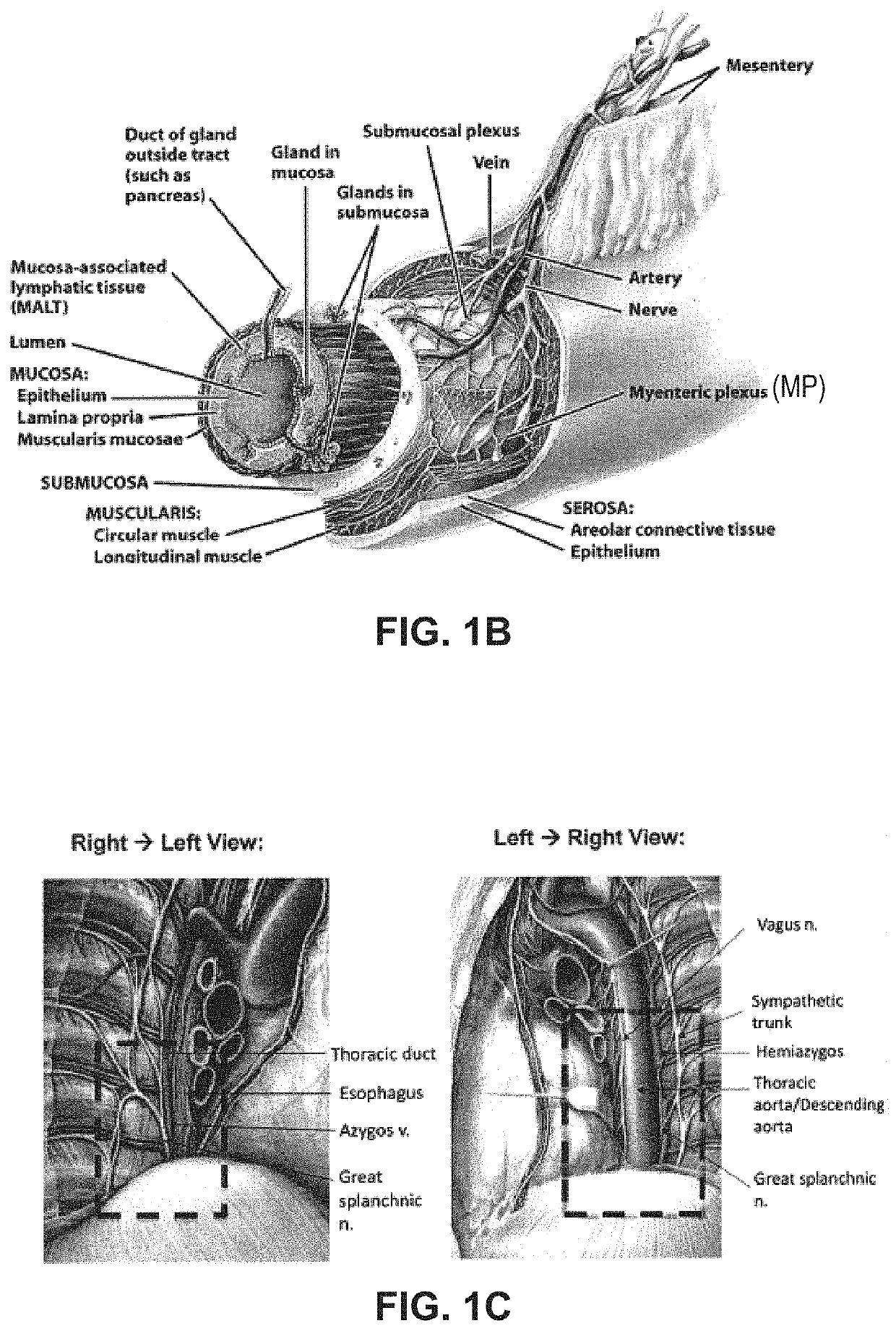Systems and methods for visceral neuromodulation
a neuromodulation and visceral technology, applied in the field of visceral neuromodulation systems and methods, can solve the problems of poor thermal ablation efficacy, short-lived and incomplete neuroablative effect, poor long-term efficacy, etc., and achieve the effect of reducing the signs or symptoms
- Summary
- Abstract
- Description
- Claims
- Application Information
AI Technical Summary
Benefits of technology
Problems solved by technology
Method used
Image
Examples
example 1
[0304]In some embodiments the 4-arm-PEG 10K-SC is crosslinked with 8-arm PEG 20K amine. The PEG-SC and PEG-amine were dissolved in an acidic diluent at a ratio of 1:1. The suspension was mixed with accelerator buffer and formed hydrogel through a static mixer. This formulation gelled in 4 seconds.
example 2
[0305]In other example, 8-arm 15K PEG-SC is crosslinked with trilysine. The PEG-SC were suspended in buffered trilysine solution and then mixed with accelerator buffer through static mixer. This formulation gelled in 2 seconds and the gel provided compression strength up to 200 kPa.
example 3
[0306]In other example, 8-arm 20 K PEG-thioisocyanate is crosslinked with trilysine at a ratio of 1:1. The formulation gelled in 3 seconds and has a compression strength of 120 kPa and 5% swelling.
[0307]The in vivo degradation, swelling, compressive and tensile strength, gelation time of the hydrogel all play a critical role in determining the appropriate hydrogel for delivery to nerves.
[0308]Equilibrium swelling. For applications in which hydrogels are delivered to nerves to prevent nerve regeneration, maintaining close adherence and apposition between the nerve and the conformable hydrogel is desirable. As a result, minimizing the equilibrium swelling post-hydrogel delivery is desirable. The equilibrium swelling occurs during in the minutes to days as the hydrogel equilibrates with the fluids in the in situ environment. It is preferable to keep the equilibrium swelling at less than 30%, more preferably less than 20% and even more preferably less than 10%. Furthermore, in some embo...
PUM
| Property | Measurement | Unit |
|---|---|---|
| Length | aaaaa | aaaaa |
| Length | aaaaa | aaaaa |
| Fraction | aaaaa | aaaaa |
Abstract
Description
Claims
Application Information
 Login to View More
Login to View More - R&D
- Intellectual Property
- Life Sciences
- Materials
- Tech Scout
- Unparalleled Data Quality
- Higher Quality Content
- 60% Fewer Hallucinations
Browse by: Latest US Patents, China's latest patents, Technical Efficacy Thesaurus, Application Domain, Technology Topic, Popular Technical Reports.
© 2025 PatSnap. All rights reserved.Legal|Privacy policy|Modern Slavery Act Transparency Statement|Sitemap|About US| Contact US: help@patsnap.com



